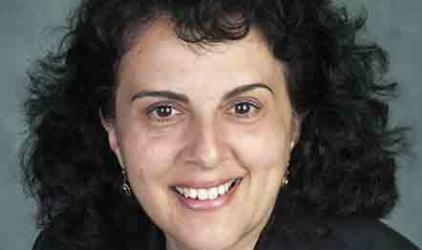Exploring the History of Educational Policies and Their Impacts (Helen Raptis)

As a child of immigrants, I learned early to love history. Hours were spent listening to members of my extended family recount the hardships they experienced during World War II, as invading armies occupied their formerly tranquil villages. My favourite account was when my grandmother lost her shoe as she shepherded her five children (my seven-year-old mother among them) across a bridge and into nearby woods during an aerial attack. After such harrowing tales, I was seriously disappointed by the “grand narratives” of history education that seemed so lacking in the human perspective. When I began my doctoral studies, the divide between those who make policy/ history and those who experience its effects drew my attention again. My interest in these two contrasting perspectives prompted me to explore how multiculturalism entered British Columbia’s educational policy agenda and what it meant for teachers and students.
By the time I finished my dissertation, I knew that my passion lay in exploring the intersections among educational policy, minority learners and schools. From 2005 to 2012, I used SSHRC funding to study the development, implementation, and impacts of the 1951 federal policy to end segregation and to integrate Indigenous children into public schools. This research culminated with an intergenerational oral history project probing the schooling experiences of Tsimshian Elders and their offspring from the late 1930s to the late 1970s. Suwilaawks: Tsimshian Education Across Time and Place is currently under review for publication.
I’ve also studied the history of provincial policies pertaining to non-English-speaking students. “Bending the Bars of the Identity Cage: Amy Brown and the Development of Teacher Identity in British Columbia” (History of Education, 2010) is an oral history illustrating the “on-the-ground” experiences of Amy (Brown) Dauphinee who taught Sudeten German refugees in BC’s Peace River region during World War II. I am currently completing a large-scale oral history project with teachers who taught during World War II. In particular, I am interested in the extent to which teachers brought nationalistic rhetoric and activities into their classrooms.
The second strand of my research interests arose from my experiences teaching History of Education to undergraduate and graduate students. I have been frustrated by the lack of historical resources pertaining to teachers and children in classroom settings – the proverbial “black box.” A 2005 oral history project assigned to my elementary pre-service teachers resulted in an ongoing collaboration with the Lower Vancouver Island Retired Teachers who donated 1700 historical artifacts that they’ve asked me to preserve. Internal and external funding – as well as plenty of volunteers – led to the creation of the online Education Heritage Museum. The goal of the virtual “museum” is to provide educators, researchers, museum workers, and community members free, open access to digitized education artifacts in order to enhance teaching, research, and community engagement with our educational past. Though still under construction, the digitized collection can be searched by key terms, such as the item type (e.g., photograph), or subject (e.g., mathematics). I currently use the materials to deepen pre-service and in-service teachers’ learning. My next goal is to assess if and how students’ historical thinking is shaped by using these authentic artifacts.

- Se connecter ou créer un compte pour soumettre des commentaires
- Français

